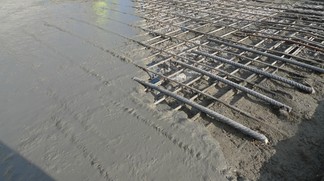Construction projects rely on conventional concretes that are made up of water, cement, and gravel. These concretes are spread over reinforcing steel bars that will be set in a course of time.
 Giving concrete infrastructure a second life
Giving concrete infrastructure a second life
This process has been employed for constructing bridges, walls, buildings, tunnels, roads and railroad tracks. Brühwiler concrete is widely used to restore the damaged civil structures.
Another concrete called Ultra-High Performance Fiber Reinforced Concrete (UHPFRC) is a novel formulation manufactured by mixing an accurate amount of short, thin metal fibers to the powdery components. As a result, an improved building material is obtained; removal of gravel increases the concentration, making the formulation impermeable to water and gases. This is demonstrated to be an extremely durable building material.
Corrosion is the major problem faced by most building structures. The density and impermeability of the Ultra-High Performance Fiber-Reinforced Concrete that has been formulated in Professor Brühwiler’s laboratory, is a potential material capable of providing a tight seal to the structure’s interior. The accelerated hardening property of this innovative material is effectively used for steep slopes, roads and other constructions related to transportation renovation. Using fewer raw materials make the structure lighter without compromising its performance.
EPFL civil engineers have been developing the approach of high performance fiber reinforced concrete, and its application in various construction procedures. The civil specialists of EPFL are experts in using fiber-reinforced concrete to improve and renovate the existing civil structures. The new concept of UHPFRC, its environmental and economic benefits, has motivated the engineers for more innovative opportunities.
Source: http://www.epfl.ch/